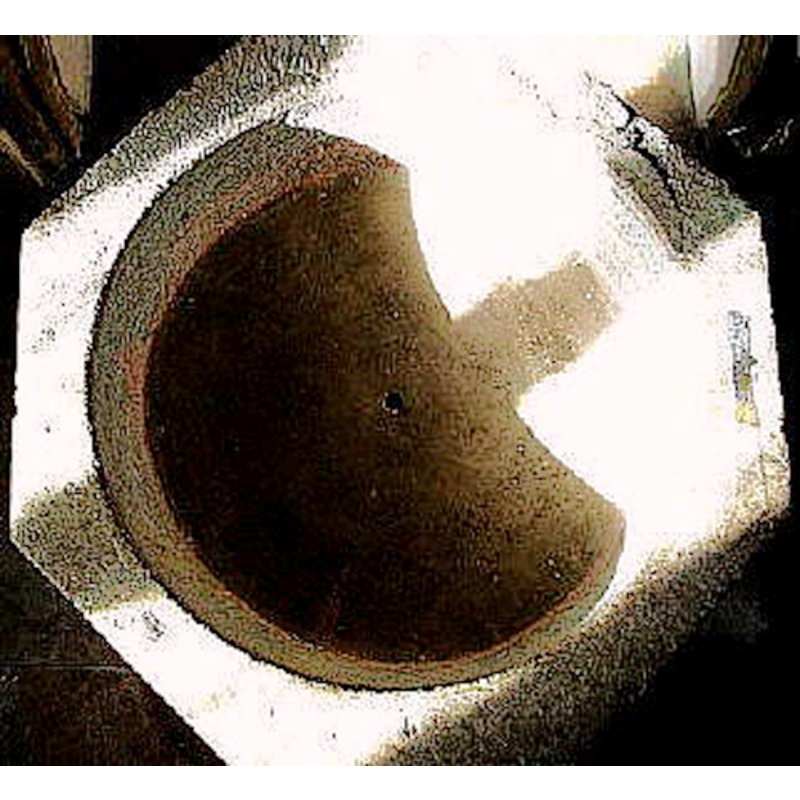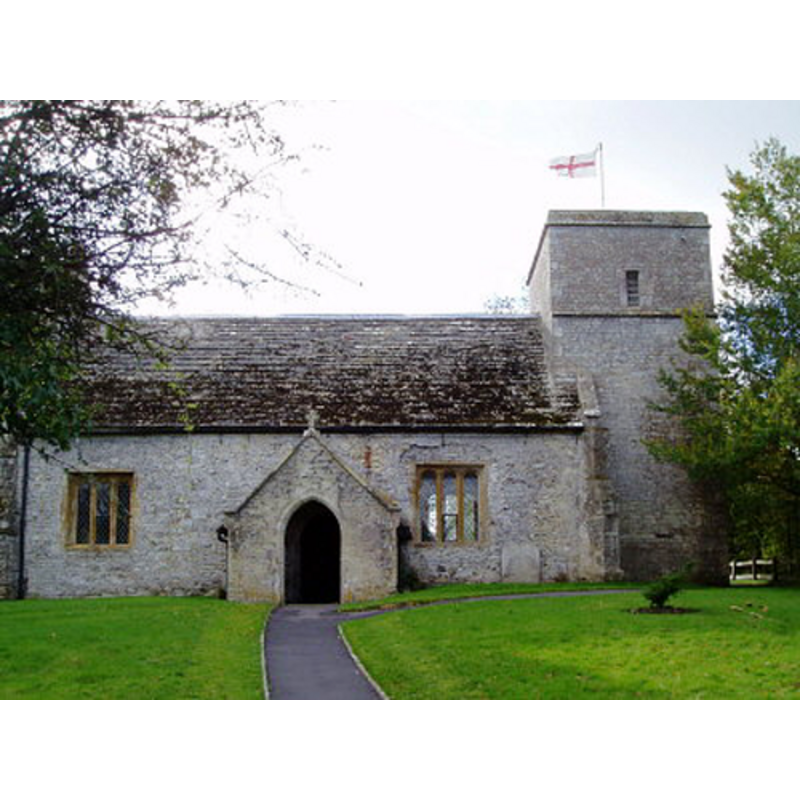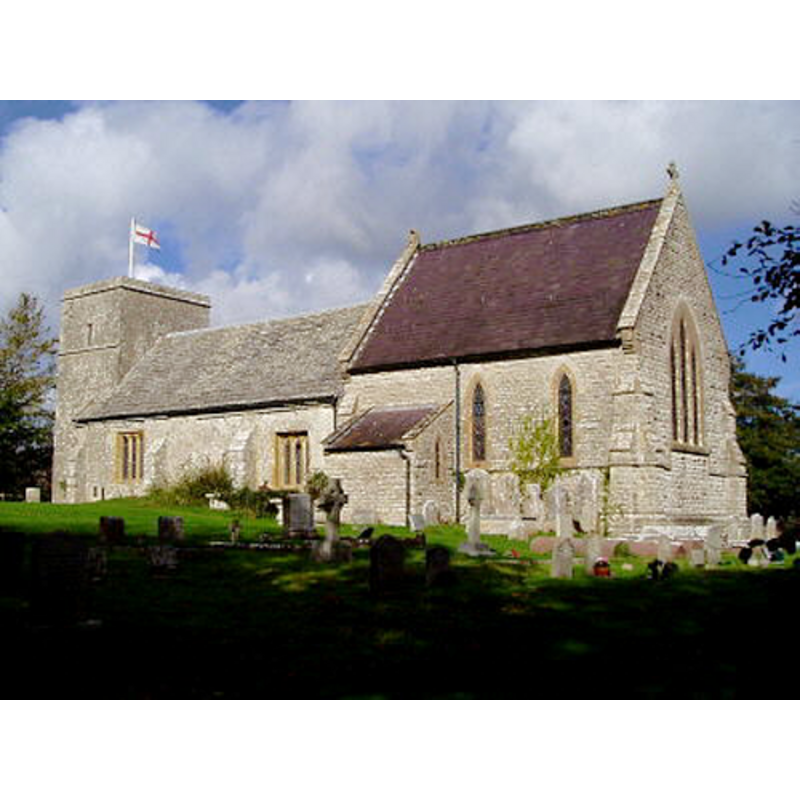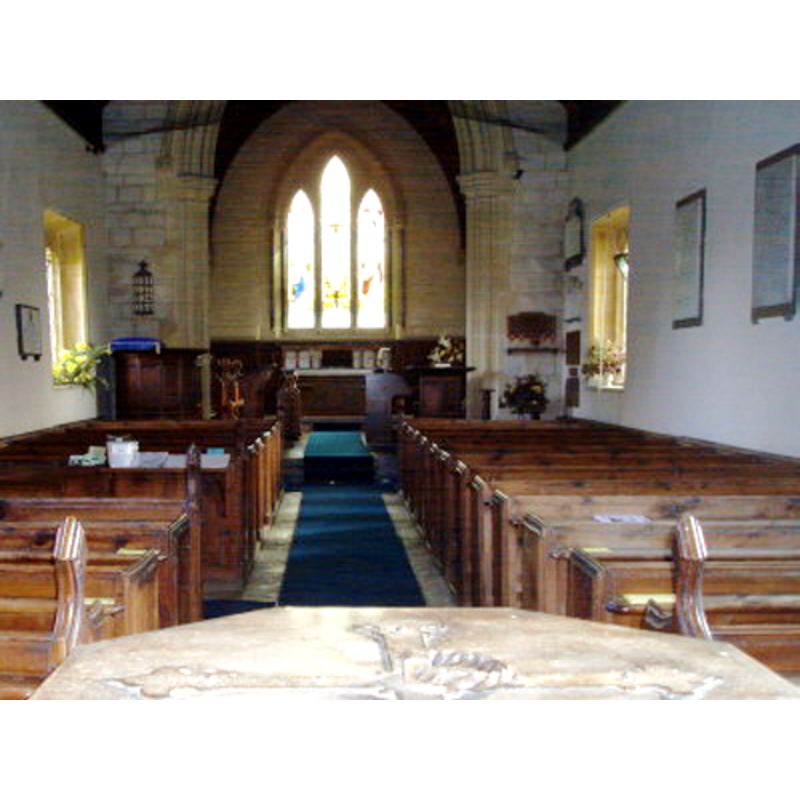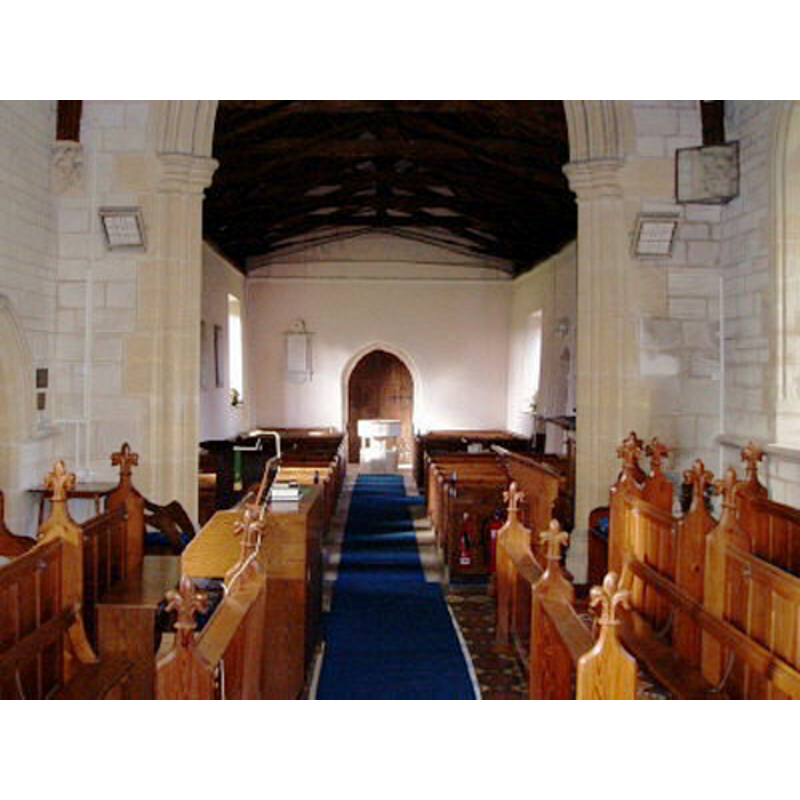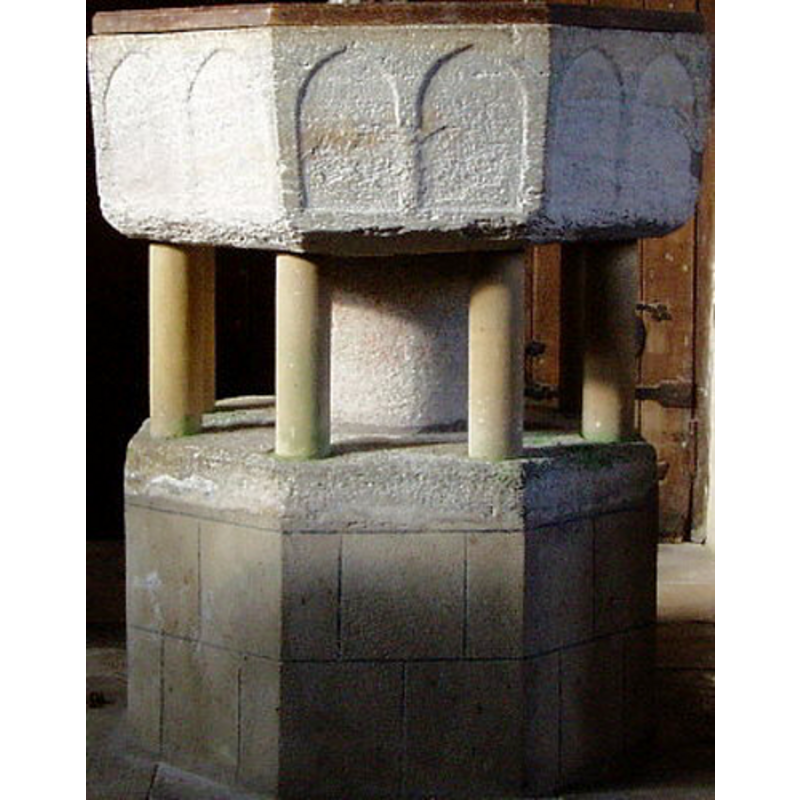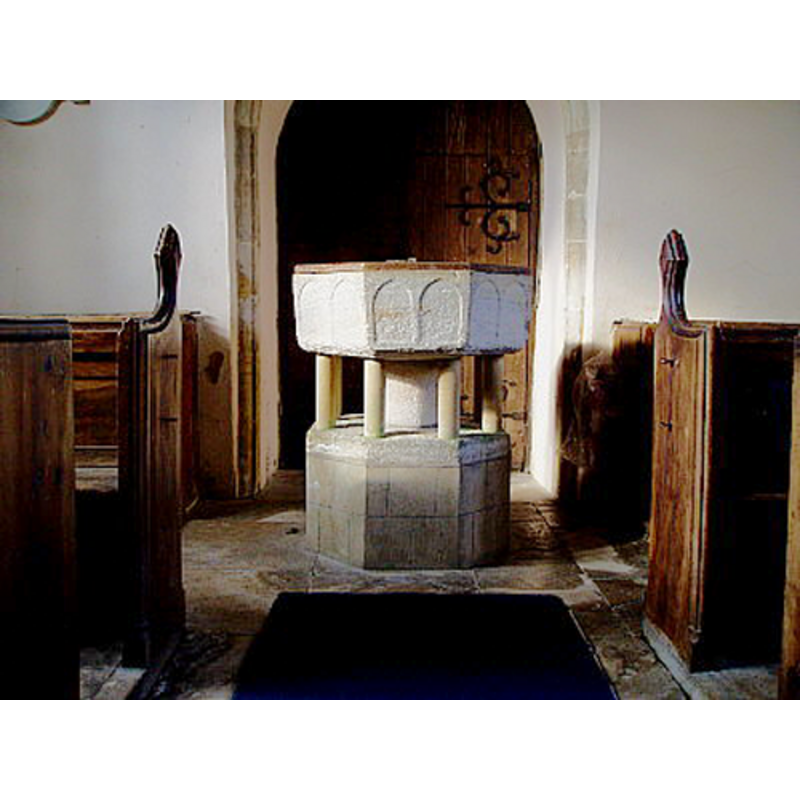Warmwell No. 2 / Warmewelle / Warmwelle
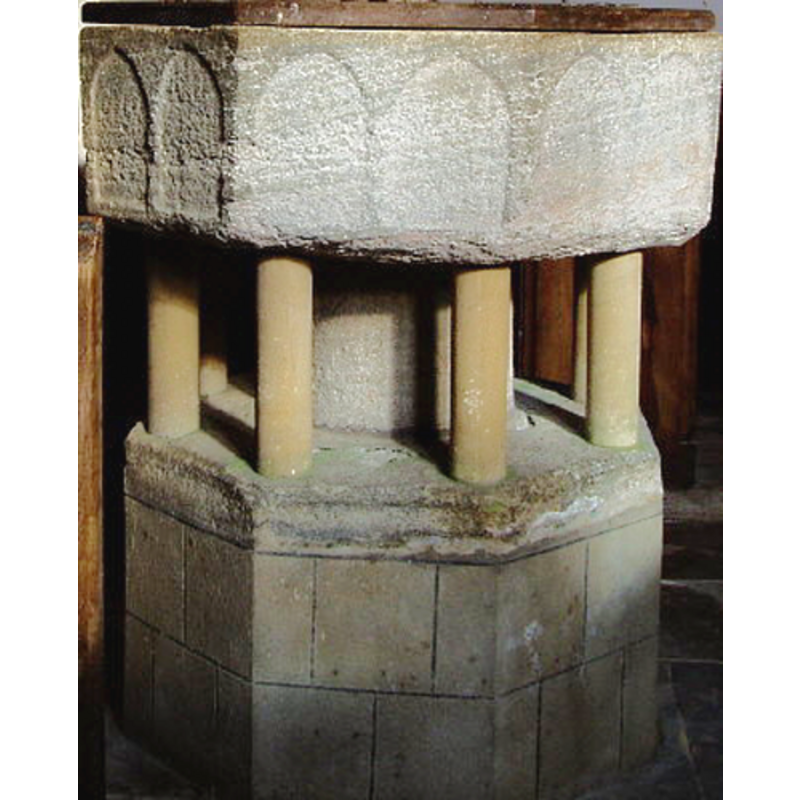
Image copyright © Gerald Duke, 2004
Standing permission
Results: 10 records
design element - architectural - arcade - blind - pointed arches - 16
view of basin - upper view
view of church exterior - north portal
view of church exterior - southeast view
view of church interior - looking east
view of church interior - looking west
view of font - front side
view of font - left side
view of font - plan, elevation, section and sketch
INFORMATION
FontID: 06664WAR
Object Type: Baptismal Font1
Church/Chapel: Parish Church of the Holy Trinity
Church Patron Saints: The Holy Trinity
Church Location: The Rectory/Main St, Dorchester DT2 8EB, United Kingdom -- Tel.: +44 1305 832195
Country Name: England
Location: Dorset, South West
Directions to Site: Located off (N) the junction of the A352 and the B3390, about 7 km ESE of Dorchester
Ecclesiastic Region: Diocese of Salisbury
Historical Region: Hundred of Winfrith [Newburgh] [in Domesday]
Font Location in Church: Inside the church
Century and Period: 12th - 13th century, Medieval [composite]
Workshop/Group/Artisan: Purbeck Marblers Guild?
Credit and Acknowledgements: We are grateful to Gerald Duke, of www.martinstown.co.uk, for the information on, and photographs of this font and church]
Font Notes:
Click to view
There are three entries for Warmwell [variant spellings] in the Domesday survey [https://opendomesday.org/place/SY7585/warmwell/] [accesed 3 June 2024]; neither of them mentions priest or church in it. Listed in Cox & Harvey (1907) and in Mee (1939) as a baptismal font of the Norman period. Noted in the RCHM (1970). In Newman & Pevsner (1972): "Font. Octagonal, of Purbeck marble, with two blank pointed arches each side; C13." Listed in Leach (1975) as a font made of Purbeck marble; "the stem is octagonal and there are no subsidiary shafts". As noted in Geral Duke [www.martinstown.co.uk], this font does not match the one described in Hutchins (1861-1873): "It seems likely that the present font was brought from elsewhere at the time of the building of the new chancel by R.C. Bennett of Weymouth in 1881. Its origin is unknown although the stone is local as this font was most likely crafted at Corfe Castle by members of the Purbeck Marblers Guild." [NB: the lower part of the base is modern]. The entry for this church in Historic England [Listing NGR: SY7527685798] notes: "Parish Church. C13 nave. C17 west tower added or rebuilt. North porch, C17. Church restored in 1851 [...] font, Purbeck marble, tapeing octagonal bowl with 2 panels with pointed heads in each face, central stem with 8 C19 subsidiary shafts, original base, C13. Raised on C19 or C20 plinth."
COORDINATES
Church Latitude & Longitude Decimal: 50.67147, -2.3511
Church Latitude & Longitude DMS: 50° 40′ 17.29″ N, 2° 21′ 3.96″ W
UTM: 30U 545854 5613493
MEDIUM AND MEASUREMENTS
Material: stone, limestone [Purbeck marble]
Font Shape: octagonal (mounted)
Basin Interior Shape: round
Basin Exterior Shape: octagonal
Rim Thickness: 9 cm*
Diameter (inside rim): 72 cm*
Diameter (includes rim): 90 cm*
Basin Depth: 24 cm*
Basin Total Height: 29 cm*
Font Height (less Plinth): 106 cm* [60 cm*]
Notes on Measurements: * Gerald Duke [www.martinstown.co.uk]
LID INFORMATION
Date: modern?
Material: wood
Apparatus: no
Notes: octagonal and flat, with metal decoration and handle; appears modern
REFERENCES
Cox, John Charles, English Church Furniture, New York: E.P. Dutton & Co., 1907
Great Britain. Royal Commission on Historical Monuments, Royal Commission on Historical Monuments in the County of Dorset, London: H.M. Stationary Office, 1970
Leach, Rosemary, A Investigation into the use of Purbeck Marble in Medieval England, Hartlepool: E.W. Harrisons & Sons, 1975
Mee, Arthur, The King's England. Dorset: Thomas Hardy's Country, London: Hodder & Stoughton, 1939
Pevsner, Nikolaus, Dorset, Harmondsworth: Penguin, 1972
